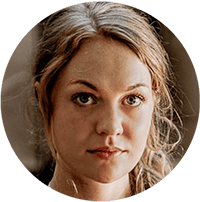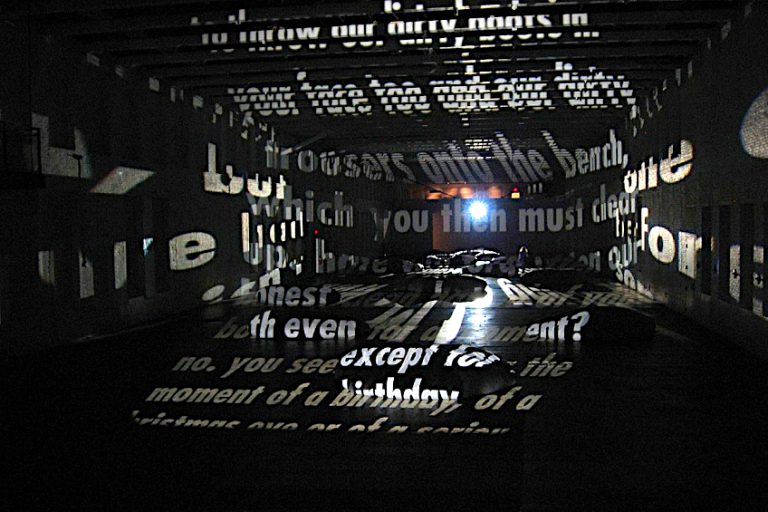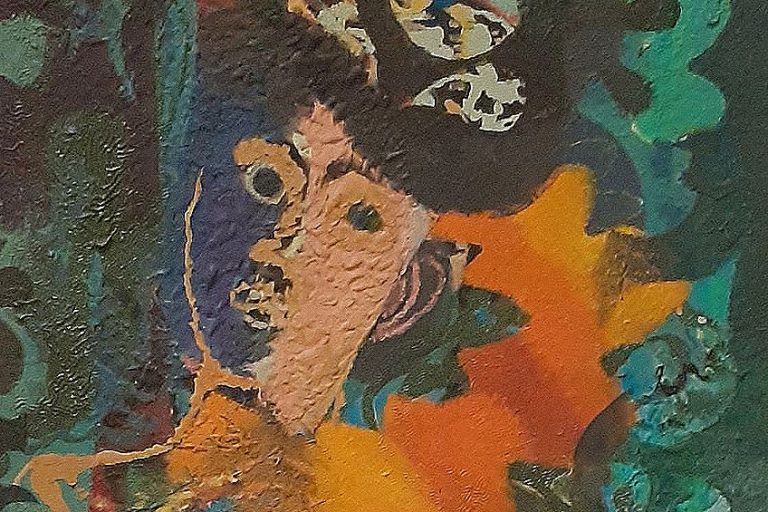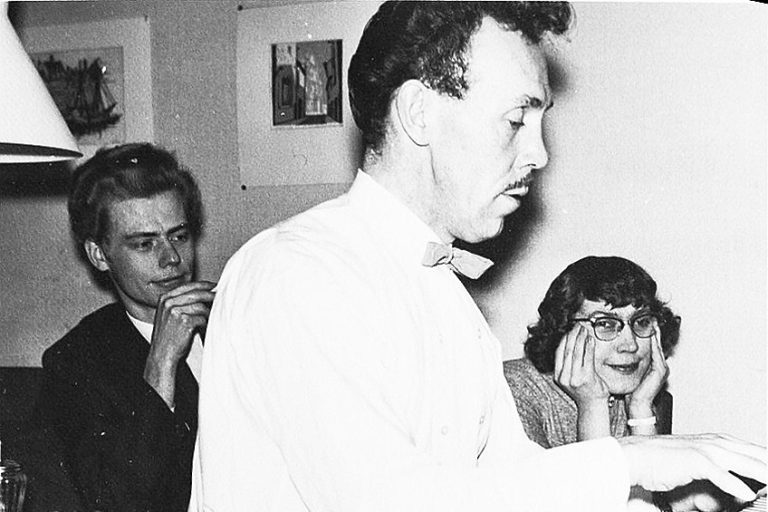George Condo – An Introduction to This Unique Artist
George Condo is an American painter known for his distinctive style and imaginative visual language that merge figuration and abstraction. His style draws from Old Master portraiture, and infuses it with Modern influences from artists including Pablo Picasso, Joan Miró, Willem de Kooning, and Jean-Baptiste Simeon Chardin. The result is a mixture of madness and beauty that makes his figures, often with deformed limbs, bulging eyes, and disarranged faces, undeniably unique.
Artist in Context: Who Is George Condo?
| Date of Birth | 10 December 1957 |
| Country of Birth | Concord, New Hampshire, United States |
| Art Movements | Neo-Expressionism |
| Mediums Used | Painting, drawing, and sculpture |
George Condo has been a central figure in American painting for almost 40 years. From priests and cardinals to clowns and nudes, George Condo’s paintings feature a vast array of strange characters, all of whom face the viewer directly. Drawing from different psychological states, Condo describes his style as “Artificial Realism”, which he argues is the accurate representation of the artificial. His paintings often blend cartoon-like figures with human forms, conveying a multitude of emotions in a single expression. His exploration of the grotesque, the carnivalesque, and the abject extends beyond paintings to sculptures and drawings. Throughout his career, George Condo’s art remained consistently true to his unique aesthetic, resulting in a remarkably diverse and skillfully executed body of work that never ceases to enchant its audience.

Childhood and Early Education
Born in 1957 in New Hampshire, George Condo remembers with fondness his first drawing at the age of 3. One Sunday, after church, he came home and drew a picture that combined the stained-glass window from his hometown’s St. Mary’s Church with Jesus on the Cross. This cherished drawing, preserved by his mother, and displayed on special occasions, marked the beginning of Condo’s passion for realistic figurative art.
Condo loved to go fishing with his brother as a child, and he frequently gave his mother drawings of fish as gifts. Condo was one of five children, and his father, a physics and math instructor, taught him, scientifically, how to express three-dimensionally. He had little interest in athletics or other conventional children’s activities as a child, instead focusing on reading and painting.
In 1962, when Condo was five years old, his family moved from Concord to Chelmsford, Massachusetts, near the birthplace of Jack Kerouac, who would greatly influence the young Condo.
Condo was attracted to the writer’s spontaneous prose method and adopted a similar freedom in his approach to painting. In 2006, Condo contributed an introduction and cover art for the posthumous publication of Kerouac’s Book of Sketches, derived from the author’s journals.
Condo recalls his first encounter with Modern art at the age of 13. He remembers being enthralled with a copy of a Picasso painting that he saw in a newspaper. Condo loved music as a kid too, and when he was a teenager, he was especially drawn to rock music. Condo began studying classical music and classical guitar at the age of 14, with his father stressing the value of understanding classical music before pursuing rock & roll. Condo later discussed how his training in music had a significant impact on his painting technique and creative thought.
Education and Early Career
George Condo continued his education at the University of Massachusetts Lowell for two years, majoring in both music theory and art history. His intense interest in Baroque and Rococo painting classes around this time sparked his devotion and he frequented Boston’s art galleries and museums. He was initially afraid to accept criticism and lacked the courage to present his art to his lecturers. However, he would soon reveal his genuine love for painting in a talk with a lecturer, who encouraged him to pursue a career in art. Condo took the decision to drop out of college after understanding his preference for painting to music.
Hereafter, Condo moved to Boston and lived with his brother, playing in the proto synth/punk rock band, called The Girls, with avant-garde musicians Daved Hild and Mark Dagley. Alongside this, Condo also worked at a silkscreen shop. At the Massachusetts College of Art, Condo enrolled in drawing classes at night. Jean-Michel Basquiat and George Condo crossed paths in 1979 when Basquiat’s band, Gray, opened for The Girls in Manhattan. As their friendship grew, Basquiat pushed Condo to relocate to New York City and pursue his artistic goals. Condo followed his friend’s advice and moved to Manhattan’s Lower East Side on Ludlow Street, where he pursued his art and helped to form the blues/punk rock group Hi Sheriffs of Blue.
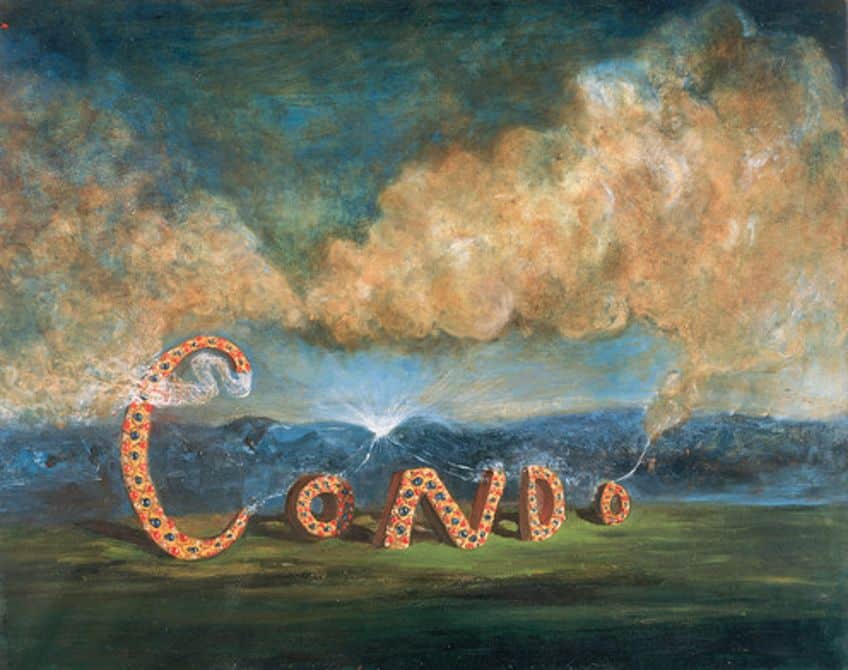
To support himself, Condo took on various office jobs, including a stint at the World Trade Center. He was hired for a two-week job at a gallery’s archives, where one of his assignments involved writing a press release about Andy Warhol. Impressed with his work, Warhol invited Condo to work with him at the Factory. Condo spent nine months at the Factory, where he worked on the silk-screening production line. He remembers this as being a fantastic way to launch his professional artistic career. He held his first exhibitions in East Village galleries from 1981 to 1983, even selling pieces to Andy Warhol. He became close friends with Keith Haring during this time, with whom he recalls having stimulating conversations.
When Haring once questioned Condo about the relative importance of life versus art, Condo replied that art was more significant because it endures past our deaths.
In 1983, Condo temporarily moved to Los Angeles where he held his first solo exhibition at the Ulrike Kantor gallery in the same year. Later, in 1984, he traveled to Cologne, Germany, where he held his first solo European exhibition at the Monika Sprüth gallery. He made friends and worked together with Mulheimer Freiheit group artists there. His relationship with Barbara Gladstone, who had just arrived in Europe in 1984, resulted in a fruitful collaboration that allowed for concurrent exhibitions at the Pat Hearn and Barbara Gladstone galleries in New York in 1984.
Mature Career
George Condo made frequent trips from Paris to New York between 1985 and 1995. He used hotel rooms and rented studios during this time and exhibited widely. In Paris, Condo met British writer and artist Brion Gysin through friend Keith Haring, who in turn introduced Condo to American Beat writer William S. Burroughs. From 1988 until 1998, Condo and Burroughs worked together on paintings and sculptures.
While in Paris, Condo had the opportunity to meet French philosopher Gilles Deleuze and psychoanalyst and activist Félix Guattari. Guattari wrote about Condo’s creative process, emphasizing the distinctive “Condo effect” that eliminated conventional pictorial structure and highlighting Condo’s musical background and his use of lines, forms, and colors as a temporal dimension. At Harvard University, Condo served as a visiting lecturer in 2004 and led a class titled “Painting Memory.” Later, he gave a lecture at Columbia University on art historian Michael Kwakkelstein’s physiognomic studies, stressing the value of seizing inspiration when it happens. Condo worked on multiple projects with rapper Kanye West in 2010, one of which was an album cover for “My Beautiful Dark Twisted Fantasy.”
Condo experienced health issues in 2013 while recuperating from Legionnaire’s disease.
He received a vocal cord cancer diagnosis in 2015 and had a successful surgical procedure. These encounters caused him to become totally absorbed in his work, which resulted in shows that explored themes of life and death. Two years later, in 2017, a large collection of Condo’s paper works traveled from the Philips Collection in Washington, DC, to the Louisiana Museum of Art in Humblebaek, Denmark, in a showcase called “The Way I Think”. Apart from participating in solo and group shows, George Condo’s art has been honored by being included in international and national biennials, including the Venice Biennale in 2013 and 2019. The largest solo exhibition of George Condo’s work in Asia, “The Picture Gallery,” was held in 2021 at the Long Museum in Shanghai. In 2023, the Nouveau Musée National de Monaco hosted a solo exhibition of Condo’s work titled “Humanoids.”
Condo currently resides in New York City, where his Upper East Side apartment is where he showcases his collection of instruments. To subvert the conventional division between drawing and painting, Condo produces “drawing paintings,” which combine charcoal, pencil, pastel, and acrylic paint into a single piece.
Five Important George Condo Paintings
In 1980s New York, artists like Condo, Jean-Michel Basquiat, and Keith Haring each developed their own distinct artistic vision. Condo’s unique “human species” symbolizes the fusion of human identity, much like his contemporaries who used instantly identifiable figures in their works, like Basquiat’s expressive faces and Haring’s dynamic bodies. In this section, we discuss five important examples of George Condo’s art oeuvre.
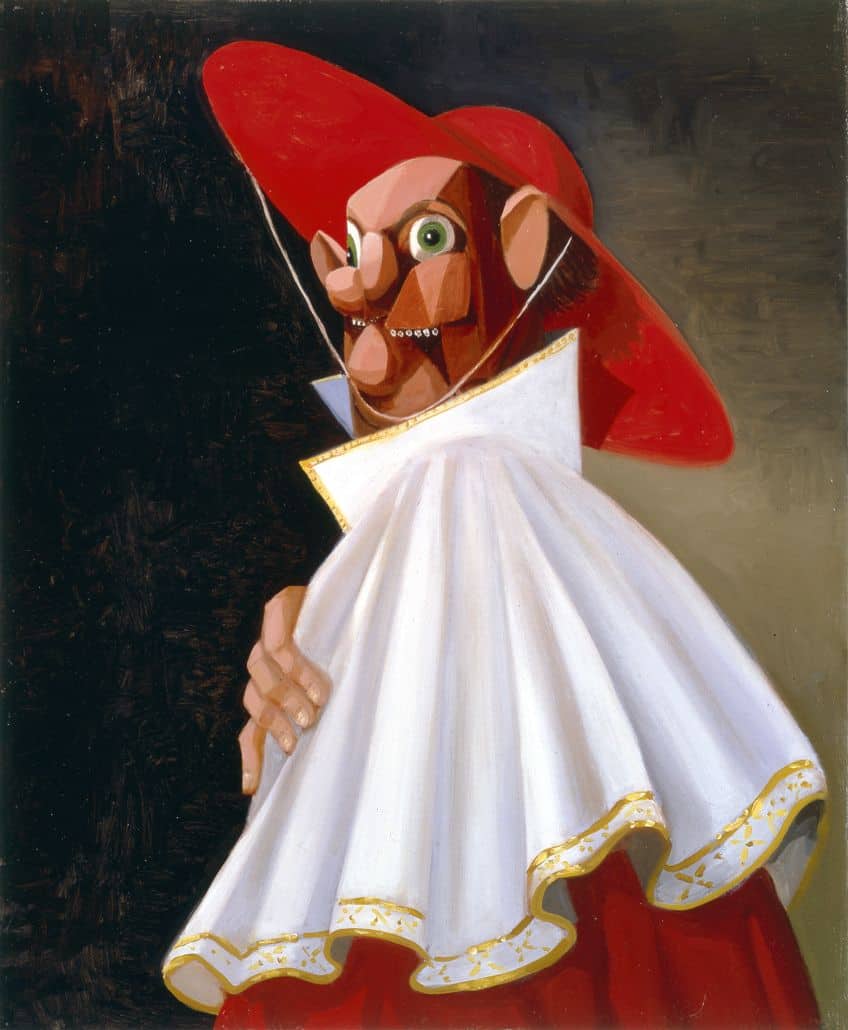
Surrealist Landscape (1983)
| Date | 1983 |
| Medium | Oil on canvas |
| Size (cm) | 90.2 x 120.7 |
| Collection | Private collection |
George Condo’s painting Surrealist Landscape (1983) is a prime example of his early work and demonstrates important artistic influences that have shaped his unique style. It is clear from the title and design of this piece that Surrealism had a significant influence on Condo’s art in the early 1980s. Produced in his East Village studio, this piece represents Condo’s first attempt at painting realistically without reference to reality, in line with the avant-garde Surrealist movement that was heavily influenced by Salvador Dalí and René Magritte. The symbolism within Surrealist Landscape evokes some of the iconic elements found in the masterpieces of these Modern masters. The painting features an early twilight sky with nebulous clouds over a landscape defined by deep, enigmatic nighttime shadows, reminiscent of the paradox of day, night, and dusk explored in Magritte’s works. References to Dali’s personified objects can be seen in the carrot-like tree and massive red mushroom-like button.
A looming dark shape in the lower right corner further deepens the enigmatic atmosphere.
Surrealist Landscape is an earlier work by Condo, created before he moved to Paris in 1985. It was there that he was exposed to the post-modern movements that would influence the later decades of the 20th century and change Condo’s work toward abstraction, which is typified by its multiple perspectives and biomorphic forms. This important early painting undoubtedly plays a pivotal role in Condo’s artistic development, emphasizing his profound ties to the history of modernism. It provides a window into a crucial period in Condo’s career when he made significant use of his knowledge of the art historical continuum, setting the stage for his later investigation of abstract portraiture, which would come to define his reputation as an artist. This piece foreshadows a successful and long-lasting artistic career by capturing a formative period in Condo’s trajectory.
Interchangeable Reality (1994)
| Date | 1994 |
| Medium | Oil on canvas |
| Size (cm) | 200 x 149.9 |
| Collection | Private collection |
Over the course of his career, Condo has developed close relationships with a wide range of intriguing authors and artists from his time. Notable figures on this remarkable list include Andy Warhol, Keith Haring, and Jean-Michel Basquiat, the first artist Condo ever saw when he moved to New York. Additionally, he had creative ties to many other people, including William Burroughs, Allen Ginsberg, Felix Guattari, and Brion Gysin. By the 1980s, Condo’s own painting style had successfully incorporated elements of cartoon-like characters and mundane imagery with cubism, surrealism, and abstract expressionism.
A new kind of figuration emerged from the combination that Condo referred to as “Artificial Realism.”
Condo’s style of “Artificial Realism” came into maturity by 1994, when Condo painted his important painting, Interchangeable Reality. Condo explained this style as him taking a ghoulish approach to figurative painting in a humorous manner, comparing it to “Rembrandt painting Bugs Bunny.” With these paintings, he tackled modern subjects using traditional painting methods. Looking forward to conversations concerning the intersection of high and popular culture, Condo’s work in the 1980s and 1990s struck a chord with artists of the day like Jeff Koons, Barbara Kruger, Louise Lawler, Richard Prince, and Cindy Sherman. He also had complex conversations at the same time with European painters such as Walter Dahn, Jiří Georg Dokoupil, Martin Kippenberger, and Albert Oehlen, who were all rebellious and influenced by punk subculture.
The Picture Gallery (2002)
| Date | 2002 |
| Medium | Oil on canvas |
| Size (cm) | 127 x 142.2 x 3.2 |
| Collection | Private collection |
George Condo’s ongoing fascination with portraiture is on full display in The Picture Gallery, which was produced in 2002. The terms “Artificial Realism” and “Psychological Cubism,” which he invented to characterize his synthesis of artistic influences, are distinctly blended in this painting. The painting depicts a pregnant woman sitting in a room full of framed photos. Her long neck gives her an air of distance. A peculiar child, resembling a demon, is cradled in her lap; it exhibits Condo’s trademark distortions. The mother and child’s relationship feels unsettling despite their close physical proximity, making the viewer wonder about the child’s reality.
This painting demonstrates Condo’s storytelling prowess and his ability to evoke strong feelings and unsettling tensions.
He explores his subject’s mind through what he calls “psychological cubism,” capturing ambiguity and paranoia. Additionally, the painting uses allusions to art history. A painting inside a painting, as suggested by the title, can be compared to Diego Velázquez’s Las Meninas. It also takes inspiration from In the Conservatory by Édouard Manet. Condo acknowledges these influences, but he does not imitate them. The Picture Gallery is evidence of this fusion of the past and present, realism and psychological abstraction, in his works, which both respect and subvert art historical traditions. This painting emphasizes Condo’s continued investigation of portraiture, in which the female figure frequently appears.
Frankenstorm (2012)
| Date | 2012 |
| Medium | Oil and oilstick on canvas |
| Size (cm) | 177.8 x 165.1 |
| Collection | Private collection |
This painting, which is mostly black, features a single figure from the chest up. Red and blue lines drawn straight define the upper body and neck. The head of the figure consists of a variety of geometric shapes in various colors, giving it an almost non-human appearance. Two white rounded discs resemble Mickey Mouse ears, and a small black sphere inside a white recessed space suggests an eye.
This painting was created in 2012 during Hurricane Sandy, when Condo was cut off from the outside world and without electricity.
Picasso’s Head of a Woman (1960) served as the direct inspiration for this piece. Condo’s signature style blends pop art and high art references in one piece, as evidenced by the Mickey Mouse-esque ears. Rembrandt’s Self Portrait (1660) and its dark, brooding tones and classical figure proportions are other sources of inspiration for the painting. Additionally, Francis Bacon’s Study after Velzquez’s Portrait of Pope Innocent X (1953) is hinted at using blue and maroon striped marks against a black background. In works like these, Condo fully embraces the postmodern idea of “recombining” established genres rather than “reimagining” them.
Blues in D flat (2021)
| Date | 2021 |
| Medium | Oil on linen |
| Size (cm) | 203.2 x 177.8 x 3.8 |
| Collection | Private collection |
In 2021, Condo created a series of “Blues” paintings, featuring abstract black and white figures set against swaths of blue. The “Blues Paintings” offer a striking contrast to his significant early works, where Condo meticulously rendered imaginary creatures, cartoon characters, and his renowned “Antipodular Beings” with the precision of a seasoned master. The “Blues” series, on the other hand, seems much more personal. These works came about during the lockdown periods of the Covid-19 pandemic and reflect the artist’s discomfort in reentering society after a prolonged period of solitude.
Condo explained that in this series of work, he aimed to empathetically convey the universal feelings of societal pressure and the need for release that we all experience.
Reading Recommendation
Since the 1970s, George Condo has invented a distinctive artistic style. His unique style, which he calls “Artificial Realism” incorporates the aesthetic strategies of numerous historical movements, including the Italian Renaissance, Spanish Baroque, French Impressionism, Surrealism, 1950s Modernism, and Pop Art.
Below we suggest a publication that richly unpack these different influences and how they manifest in George Condo’s art.
George Condo: Painting Reconfigured (2022) by Simon Baker
This recent publication on the works of George Condo is written by Simon Baker, a curator who has collaborated closely with the artist to create this comprehensive account of Condo’s life and work. The book features an introductory essay delving into Condo’s multifaceted and contradictory nature, a chapter dedicated to his remarkable early career, and three thematic chapters that meticulously trace his systematic exploration and reconstruction of painting techniques from 1984 to the present day. The book includes 338 color illustrations and provides remarkable insight into the artist’s life and work.
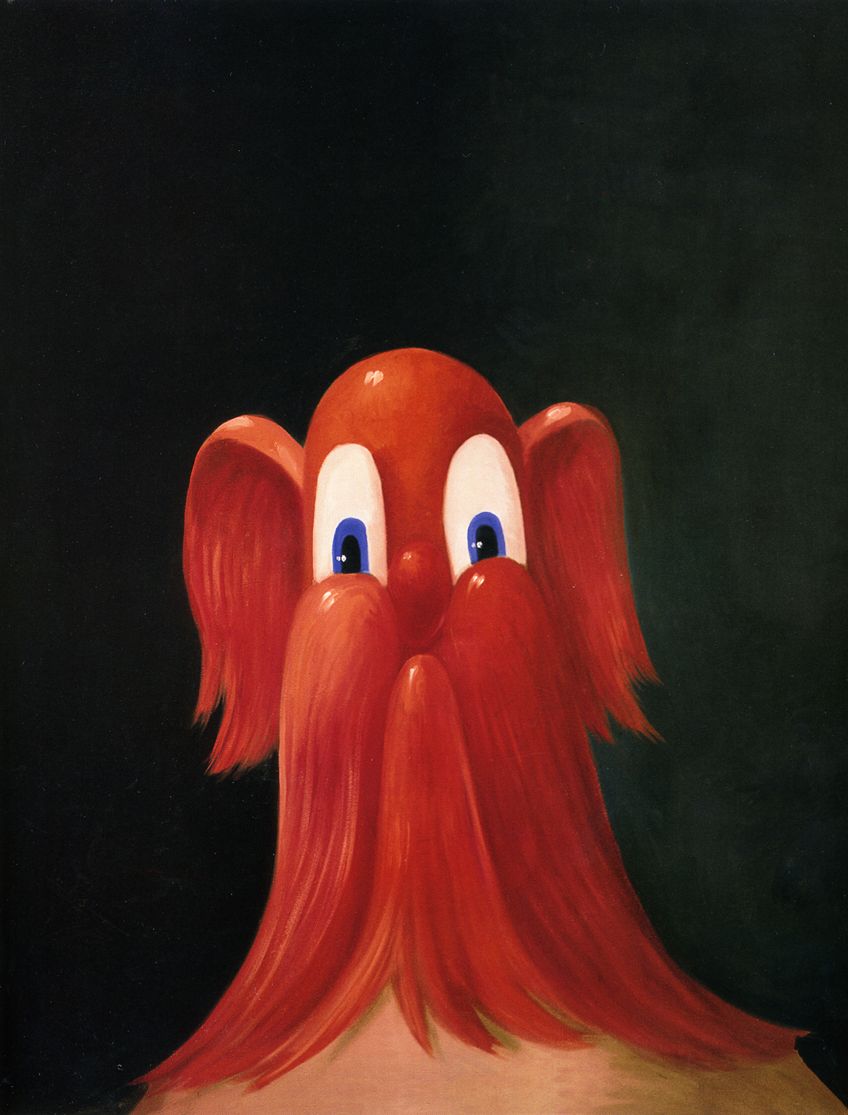
- A comprehensive account of Condo's life and art career
- Take a more intimate look at the man behind the paintbrush
- Browse 338 high-quality color illustrations
George Condo remained steadfast in his commitment to this distinctive artistic style throughout his extensive career, consistently producing a wide array of paintings, sculptures, and drawings that exude a carnivalesque and macabre essence. These artworks serve as a direct and poignant reflection of the contemporary era in which he resides, effectively conveying the intricate narratives of his inner world and boundless imagination. Condo’s work encapsulates the essence of the times he lives in, while unraveling the rich tapestry of his creative psyche.
Frequently Asked Questions
What Materials Does George Condo Use?
Besides oil paint, you might be wondering what materials does George Condo use in his artistic practice. Condo employs a wide range of materials in his art, showcasing versatility across different mediums. Besides his vibrant oil and acrylic paintings, George Condo’s art often includes drawing and sculpture. His drawings feature charcoal, pencil, ink, and pastels, allowing for intricate details and varied styles. When sculpting, he utilizes materials like bronze and aluminum with gold leaf. His works on paper often incorporate collage elements from newspapers or magazines. Condo’s willingness to explore mixed media contributes to the diverse and layered nature of his artistic output.
What Art Style Does George Condo Use?
George Condo’s art style is often described as a fusion of various influences, resulting in a unique and distinctive approach known as Artificial Realism. His work draws on a wide range of artistic movements, including elements of Surrealism, Pop Art, Cubism, and Abstraction, while incorporating a cartoonish and grotesque figurative style. This eclectic blend of influences and techniques characterizes Condo’s art, making it challenging to classify within a single, traditional art style. His ability to recombine and reinterpret existing genres exemplifies the postmodern notion of art, which straddles the line between representation and abstraction.
Chrisél Attewell (b. 1994) is a multidisciplinary artist from South Africa. Her work is research-driven and experimental. Inspired by current socio-ecological concerns, Attewell’s work explores the nuances in people’s connection to the Earth, to other species, and to each other. She works with various mediums, including installation, sculpture, photography, and painting, and prefers natural materials, such as hemp canvas, oil paint, glass, clay, and stone.
She received her BAFA (Fine Arts, Cum Laude) from the University of Pretoria in 2016 and is currently pursuing her MA in Visual Arts at the University of Johannesburg. Her work has been represented locally and internationally in numerous exhibitions, residencies, and art fairs. Attewell was selected as a Sasol New Signatures finalist (2016, 2017) and a Top 100 finalist for the ABSA L’Atelier (2018). Attewell was selected as a 2018 recipient of the Young Female Residency Award, founded by Benon Lutaaya.
Her work was showcased at the 2019 and 2022 Contemporary Istanbul with Berman Contemporary and her latest solo exhibition, titled Sociogenesis: Resilience under Fire, curated by Els van Mourik, was exhibited in 2020 at Berman Contemporary in Johannesburg. Attewell also exhibited at the main section of the 2022 Investec Cape Town Art Fair.
Learn more about Chrisél Attwell and the Art in Context Team.
Cite this Article
Chrisél, Attewell, “George Condo – An Introduction to This Unique Artist.” Art in Context. January 8, 2024. URL: https://artincontext.org/george-condo/
Attewell, C. (2024, 8 January). George Condo – An Introduction to This Unique Artist. Art in Context. https://artincontext.org/george-condo/
Attewell, Chrisél. “George Condo – An Introduction to This Unique Artist.” Art in Context, January 8, 2024. https://artincontext.org/george-condo/.




